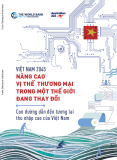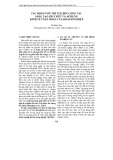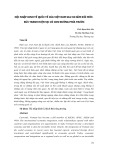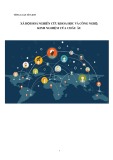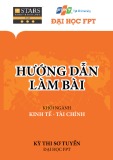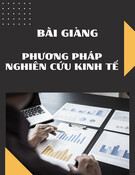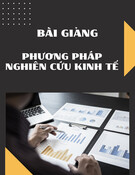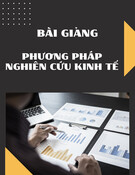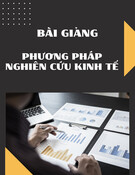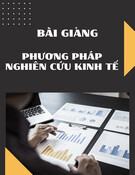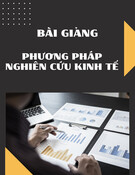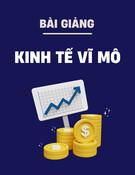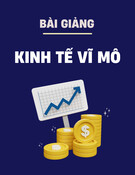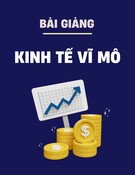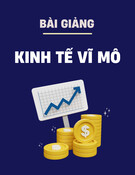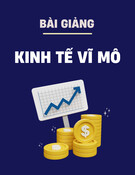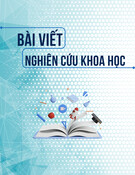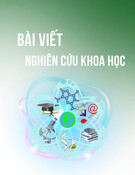
* Corresponding author. Tel.: +989112267648
E-mail address: masoomibehzad4@gmail.com (B. Masoomi)
© 2020 by the authors; licensee Growing Science, Canada.
doi: 10.5267/j.dsl.2019.7.001
Decision Science Letters 9 (2020) 107–118
Contents lists available at GrowingScience
Decision Science Letters
ho
mepage: www.GrowingScience.com/d
sl
Applying fuzzy delphi and best-worst method for identifying and prioritizing key factors
affecting on university-industry collaboration
Alireza Mosayebia, Shahryar Ghorbanib and Behzad Masoomic*
aPh.D of Decision Making and Policy Making, Lecturer at University of Mazandaran, Faculty of Economics & Administrative Science, Babolsar, Iran
bPhD Student in Management and Business Administration Programme, Graduate School of Social Sciences, Istanbul Gedik University, Turkey
cPhD student in Operation Management, Department of Management, Islamic Azad University, Firoozkooh Branch, Tehran, Iran
C H R O N I C L E A B S T R A C T
Article history:
Received June 15, 2019
Received in revised format:
June 20, 2019
Accepted July 27, 2019
Available online
J
uly
27
,
201
9
The collaboration between the universities and industries is currently in the focus of attention
globally. Governments, universities, and industries are interested in good and effective
collaboration, which would be beneficial for all parties. To foster University-Industry
Collaboration, and to help transfer the knowledge and technology between these two parties,
academics, politicians and companies are paying attention to science and technology policies
more than ever. In this study, the factors affecting the improvement of University-Industry
Collaboration are identified and prioritized. In the first step, 20 factors are identified and 12
factors are selected using the Fuzzy Delphi method. Then, using the BWM method, prioritizing
the extracted factors is determined for industry sponsorship of the university research. Finally,
based on the results, the discussion is conducted and six major strategies are presented to improve
this relationship.
.
by the authors; licensee Growing Science, Canada 2020©
Keywords:
University- Industry collaboration
Technology
Incubator
University affiliated research
institutes
1. Introduction
The cooperation between universities and businesses is presently within the focus of attention globally.
Governments, universities, and businesses have an interest in smart and effective collaboration, which
might be useful for all parties. To foster university-industry cooperation, and therefore the data and
technology transfer between these 2 parties, academics, politicians and corporations have been
cooperating to promote their relationships. For coming up with and evaluating the policies, it is vital to
outline and use correct indicators. Though many governments and agencies are regularly looking for
ways to facilitate the interactions between businesses and universities, hoping that they would increase
the productive processes. They also look for correct indicators to build university-industry
collaboration to form political selections at the national level (Seppo & Lilles, 2014). In addition,
universities and corporations will use these indicators in evaluating the collaboration results.
Governments square measure actively promote the formation and development of U-I networking by
coming up with and implementing innovation policies consequently (Perkmann et al., 2013; Etzkowitz
et al., 2000; Park & Leydesdorff, 2010; Giuliani & Arza, 2009; Tuunainen & Knuuttila, 2009; Charles,
2003). Nevertheless, our understanding of the underlying mechanisms of U-I interaction remains
restricted (Steinmo & adventurer, 2016; Villani et al., 2016).

108
Without adequate complementary data concerning business and marketplace, university researchers
could also be unable to acknowledge or exploit the opportunities in their technological discoveries
(Franklin et al., 2001; Rasmussen & Borch, 2010; Venkataraman, 1997; Vohora et al., 2004). Within
the context of developing countries, university researchers' access to industrial data could also be even
crucial, as universities typically have to be compelled to undertake additional development or problem-
solving work on the far side science lab innovations because of the poor sponge like capacities of
exploitation partner companies (Eun et al., 2006). There are several methods for transferring technology
or data from university to business (U-I), which is tutorial entrepreneurs' learning from business, i.e.
data transfer from business to college (I-U), is an imperative issue. The reverse data flows (IU) also are
a rife modality as tutorial entrepreneurs learn from business practitioners to get new ideas with higher
potential to be commercialized (Baba et al., 2009; D'Este & Patel, 2007; Siegel et al., 2003). According
to Gardner et al. (2010), the data transfer activities have to demonstrate the profit to society from
advances in knowledge, to make sure comfortable returns on investment, to produce benchmarks for
comparison across the business, to push competition within the world marketplace, and to support
future appeals for funding. The businesses have an interest within the returns on investment, which is
additionally vital to think about the case of university-industry cooperation activities. The data transfer
between universities and business is conducted through varied channels and practices. Therefore, in
analyzing and evaluating the cooperation between academe and business, it is necessary to think about
the range of connections.
In general University-industry (U-I) collaboration is thought of a relevant economic driver as
universities specialize data which are expected to contribute to the economic development of nations
or regions. Data and technology transfer between universities and businesses are anticipated to spur
innovation, as this sort of collaboration combines not solely heterogeneous collaborates, but
heterogeneous the data. Because of the lack of uniformity, partners at the same time face the necessity
to cross-different boundaries whereby, managing their boundaries is that the central challenge for inter-
organizational collaboration (Tsasis, 2009). In general, University-industry (U-I) collaboration is
nowadays considered as a relevant economic driver as universities specialized knowledge that is
expected to contribute to the economic development of countries or regions. Knowledge and
technology transfer between academia and industry is expected to spur innovation, as this kind of
collaboration combines not only heterogeneous collaborates, but also more importantly, heterogeneous
knowledge. Due to this heterogeneity, partners concurrently face the need to cross-different boundaries
whereby, managing their boundaries is the central challenge for inter-organizational collaboration
(Tsasis, 2009). Therefore, the boundary spanning and relevant social processes may open important
aspects of U-I collaboration.
In Iran, cooperation between industry and the university has always been poor and has not provided a
suitable platform, both for the university and for the industry. Implementation of this cooperation has
always experienced some fundamental obstacles. Therefore, the present study is accomplished to
identify and prioritize the affective factors for the improvement of cooperation between industry and
university. Accordingly, the purpose of the research is to first find the most important factors in the
subject literature and research background and then the prioritization of improvement indicators is
performed using Fuzzy Delphi and BWM. The reason for using these two models in the research is due
to its high measurability and reliability compared with other approaches.
This paper attempts to achieve the goal mentioned above in two parts. In the first section of the study,
critical factors for identifying the effective indicators in cooperation between industry and university
at the University of Tehran one level are searched through the literature review tool and the background
of the research. In the second part of the study, these indicators are screened and localized with a fuzzy
Delphi model and then evaluated and prioritized using the BWM technique.

A. Mosayebi et al. / Decision Science Letters 9 (2020)
109
2. University- Industry collaboration
Since their foundation, the role of universities in society has modified over time. At first, the
universities were aside from society and their role was to preserve the culture and data for the society
(Brockliss, 2000; Etzkowitz et al., 2001). Over time, the interaction with establishments outside
universities has augmented significantly. The linkages between universities and enterprises have
modified to forms and within the intensity of interaction. The oldest mission of university was to
provide some teaching to supply ball-hawking and skilled specialists for society. Within the nineteenth
century, the universities began to focus on analysis (Brockliss, 2000). The analysis produces and
disseminates some results through publications. According to Etzkowitz (2001) the colleges of these
days need to notice the acceptable balance between teaching, basic and applied analysis, and
entrepreneurship.
Santoro (2000) and Santoro, Chakrabarti (2002) distinguish four forms of university-industry
relationships:
Research support, that embodies monetary and instrumentation contributions created to
universities by trade. These contributions may be unrestricted gifts of endowment trust funds
that the university uses to upgrade laboratories, offer fellowships to students, or offer capital
for promising new outcomes . Nowadays, the support for university analysis is additional
targeted and infrequently tied to specific analysis outcomes, which, in return, offer data and
new technologies to trade .
Cooperative analysis includes contract analysis with individual investigators, consulting by
faculty, and bound cluster arrangements specifically for addressing immediate trade issues.
Within the case of individual investigators or a practice there is typically just one academician
concerned named World Health Organization which is functioning with one firm on a targeted
scientific research.
Knowledge transfer encompasses extremely interactive activities that embody on-going formal
and informal personal interactions, cooperative education, program development, and personnel
exchanges.
Technology transfer additionally involves extremely interactive activities. Compared to data
transfer the main focus here is on addressing immediate and additional specific trade problems.
In technology transfer, the university-driven analysis and trade experience create
complementary contributions into commercial technologies required by market. Typically, the
university provides basic and technical data at the side of technology patent of licensing
services. Trade members offer data in an exceedingly specific applied space at the side of a
transparent downside statement associated with market demand. Technology transfer takes
place through technological consulting arrangements, the firm’s use of university’s extension
services, collectively in hand or operated ventures .
Collaboration between business practitioners and tutorial researchers has been conceptualized as a
higher-level method that encompasses cooperation and coordination (Bedwell et al., 2012). U-I
collaboration has been characterized by “cultural divide” between partners in terms of goals, views,
motives and routines; so, such collaboration is very many-sided. The decision-making processes is
normally difficult (Bäck & Kohtamäki, 2015), and individual factors have an effect on it. Amabile et
al. (2001) attributed 3 necessary options for the collaboration between tutorial researchers and business
practitioners: 1) it involves those that area unit members of various professions (academia and
business); 2) it's a collaboration between people or groups, not between organizations; and 3) the
collaborators are not all members of a similar organization. The excellence of people and groups versus
organizations may be relevant purpose of departure during this study, because the abstract approach
focuses on people and groups. Organizations produce the context for the collaboration, whereas
motivation and maturity for that depends rather on the particular characteristics of acting people and
groups than on the overall organizational processes.

110
During the past few years, analysis has been conducted on collaboration between trade and therefore
the university :
Research has shown that there are a unit bound characteristics of a corporation that influence its ability
to utilize outwardly generated knowledge domain, and therefore the data are transferred from
universities (Agrawal 2001). The amount of assimilatory capability depends on previous connected
data and knowledge (Cohen & Levinthal, 1990). Barnes et al. (2002) outlined in their analysis the
complementary experience or strengths, history as collaboration partners within the past, shared vision
or strategic importance, complementary aims, and cooperative expertise usually as necessary firm
characteristics, that area unit sensible stipulation for thriving cooperation. The standard of workers may
be thought-about as firm capabilities. The matter here is that it is exhausting to have it objectively. The
indications of firm capability may be, as an example, quality certificates (ISO certificates), variety of
previous comes with universities, membership in some analysis cluster or cooperative network, variety
of scientists, education of workers, and therefore the involvement of workers within the activities of
university (e.g. guest lecturers in university).
According to Perkmann et al. (2011) Patent applications or patents granted may be used as measures
of the technological output of university–industry outcomes. Also, some university–industry alliances
area unit supported specific ‘open science’ rules that stipulate that each one data generated ought to
flow into the general public domain with no restrictions.
The number of publications in peer-reviewed journals is employed in academic as a serious
performance metric. The amount of joint publications of university and trade scientists may be a terribly
specific indicators of university-industry collaboration (Langford et al., 2006). Tijssen et al. (2009)
used joint analysis publications that area unit co-produced by R&D workers from non-public sector
organizations and universities for evaluating university-industry analysis cooperation. The joint
analysis publications are specialized in longer-term views whereas applied analysis in a short- or
medium-term development focus on area unit typically not disseminated within the peer-reviewed
literature. Patents or alternative type, which frequently are also confidential. The co-authored
publications area unit thought-about to be an honest indicator of diffusion of information and skills,
and informal network between universities and firms. The indicator is additionally quantitative,
available, and straightforward to gather. However, it is necessary to know that this indicator should not
be used alone for outlining university-industry cooperation as there are unit several cases wherever no
co-authored papers area unit revealed (Lundberg 2006).
Perkmann et al. (2011) believe that intensity of the collaboration is associated with the coaching and
learning opportunities between universities and businesses. From analysis, it seems that there are
completely different methods for creating functions (Iqbal et al. 2011). Workshops, seminars and
conferences, wherever the participants are from each university and trade, may be thought-about
because the outputs of university-industry cooperation. The high variety of non-public contacts
additionally indicates the next intensity of collaboration and data transfer between the partners.
Previous studies in the field of collaboration between university and industry identified several factors,
Table 1 shows a summary of the factors mentioned in the previous studies.
Table 1
Indicators university-industry cooperation
INDICATORS UNIVERSITY-INDUSTRY COOPERATION
Index
R&D expenditure
C1
university’s governmental income
C2
non
-
government donations
C3
industry sponsorship of university research
C4
scholarships number of researchers
C5
number of publications
C6
projects
C7
reports or patents done in the past
C8

A. Mosayebi et al. / Decision Science Letters 9 (2020)
111
Table 1
Indicators university-industry cooperation (Continued)
INDICATORS
UNIVERSITY
-
INDUSTRY COOPERATION
Index
number of industry contracts in the university
C9
number of strategies concerning industry
-
university cooperation in the university
C10
amount of resources dedicated to support cooperation in university
C11
perception of researcher about the benefits from the cooperation with industry
C12
quality certificates (ISO)
C13
previous collaboration with academia
C14
membership of some association or research group
C15
number of scientists
C16
structure of
employees by occupation and education
C17
number of previous contracts with universities
C18
involvement with university (e.g. alumni, lecturer)
C19
perception of the firm about the benefits from the cooperation with university
C20
Source: compiled by authors based on Barnes et al. (2002), Bercovitz and Feldman (2008), Perkmann et al. (2011), Langford et al. (2006),
Iqbal et al. (2011), Tijssen et al. (2009), Luoma et al. (2011).
3. Methodology
The present research is in terms of purpose, fundamental- practical method and in terms of method of
data and information, collection is descriptive-survey. The present research was conducted in the first
step using the Fuzzy Delphi method and based on opinions of 38 experts. The method of best worst
method was conducted. This section explains this Steps.
3.1. Fuzzy Delphi Method
Kaufmann and Gupta were the primary to introduce Fuzzy Delphi Method (FDM) in 1988. The method
has been applied quite frequently with success in numerous applications such as; business web site
content personal presentation (Kardaras et al., 2013), dry bulk freight predictions (Duru et al., 2012),
constructing road safety performance indicators (Ma et al., 2011), etc. Usually, the analysis involves
unsure and general datasets, wherever the expert’s opinions are usually subjective. Thus, the triangular
fuzzy numbers (TFNs) are acceptable to utilize compared with the crisp numbers within the sense that
it will represent the knowledge more precisely in real state of affairs. The strategy truly may be a
generalization of classical methodology referred to as the urban center method that was developed by
Dalkey and Helmer (1963). However, during this paper, we have a tendency to modify the FDM with
following extra tools/instruments:
i) Provide the decision matrix to suit with the nature of the datasets,
ii) Utilize the TFNs to evaluate the importance of each attribute,
iii) Equip the decision analysis with 3 levels of confidence using linguistic variables (i.e., Very
Optimistic (VO), Neutral (N), and Very Pessimistic (VP)) (see sub-section 3.3)
To evaluate each attribute, in this study, we utilized 7 linguistic variables to represent the level of
importance given in Table 2.
Table 2
The seven linguistic variables
Linguistic variables
TFNs
Very low (VL)
(0, 0.1, 0.2)
Low (L)
(0.1, 0.2, 0.3)
Medium low (ML)
(0.2, 0.3,
0.4)
Medlum (M)
(0.3, 0.4, 0.7)
Medium high (MH)
(0.6, 0.7, 0.8)
High (H)
(0.7, 0.8, 0.9)
Very high (VH)
(0.8, 0.9, 1.0)

